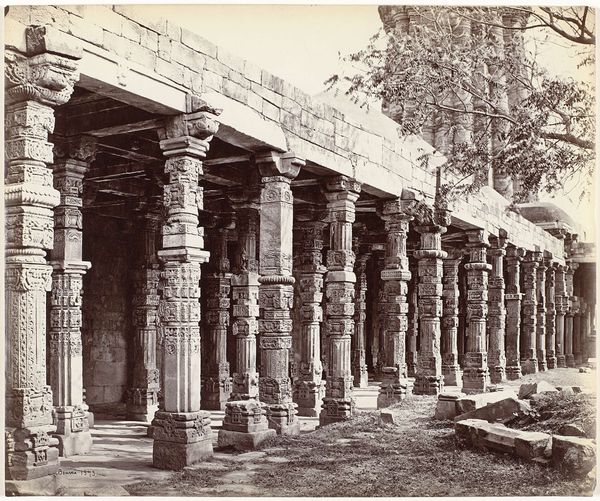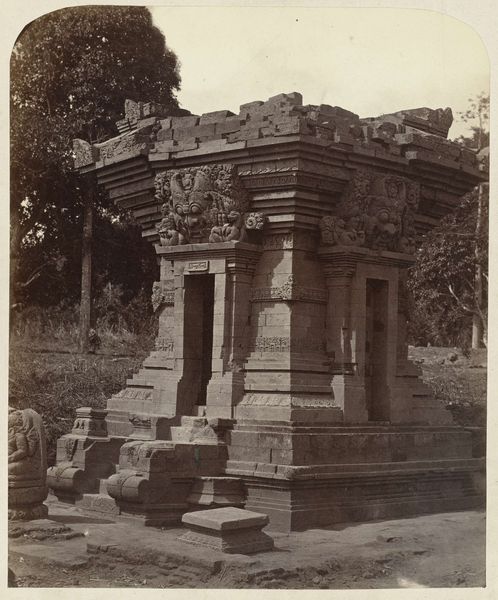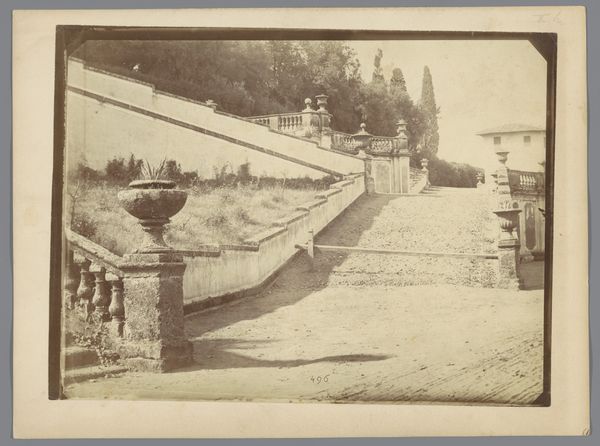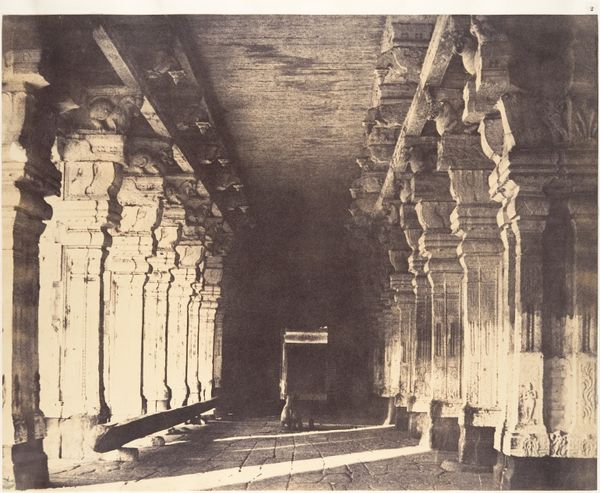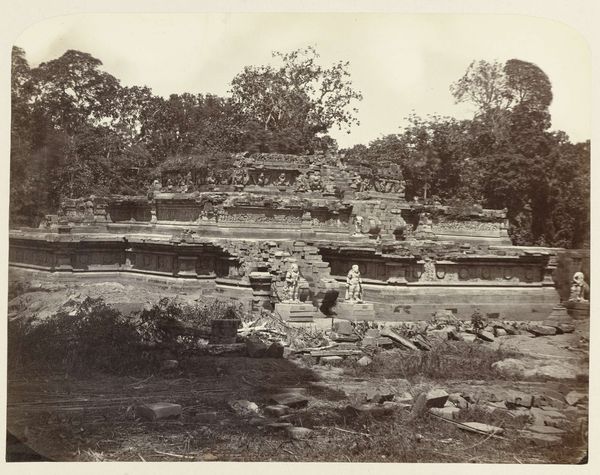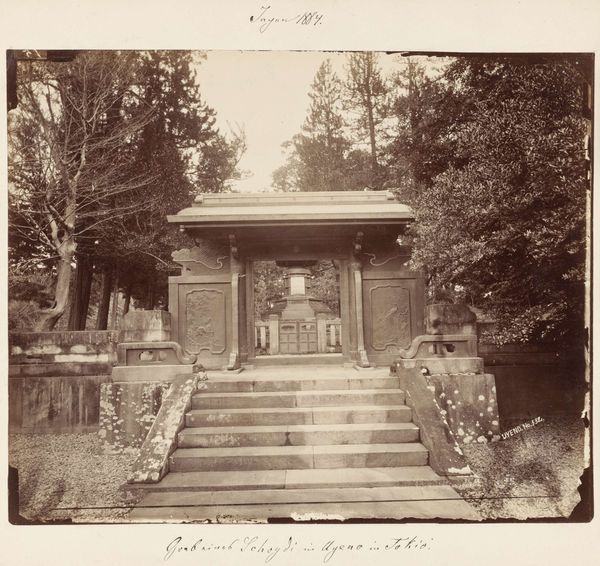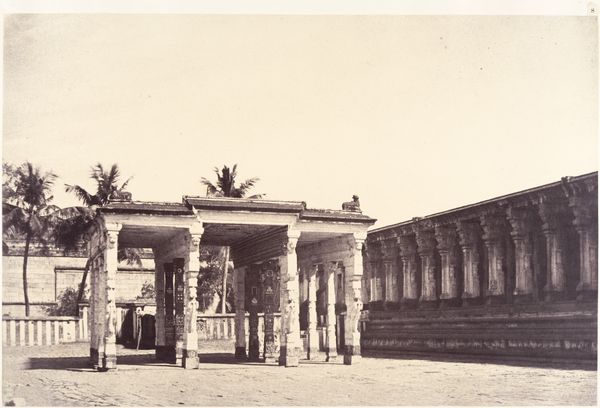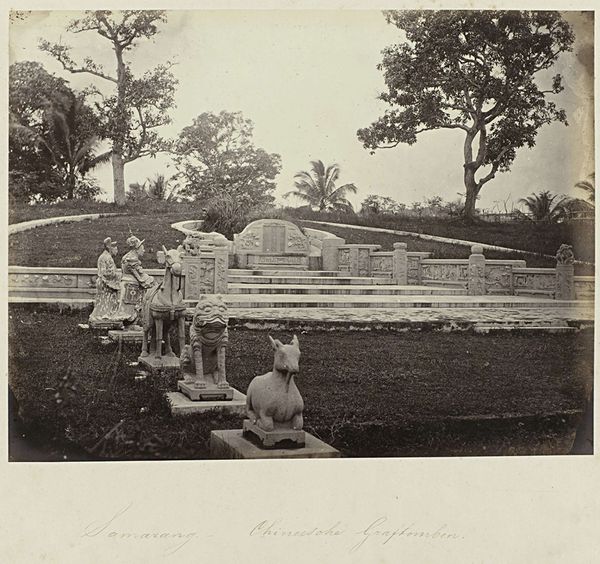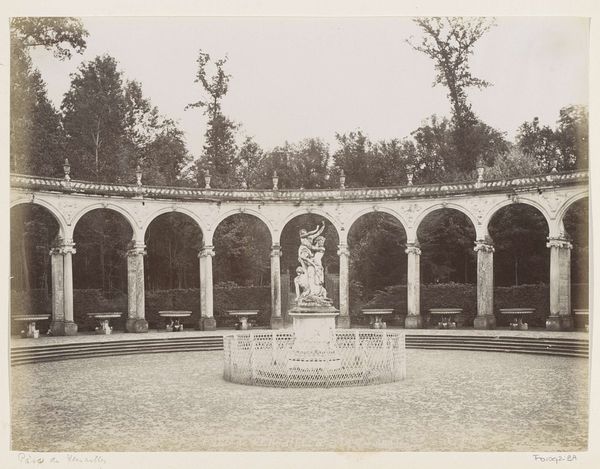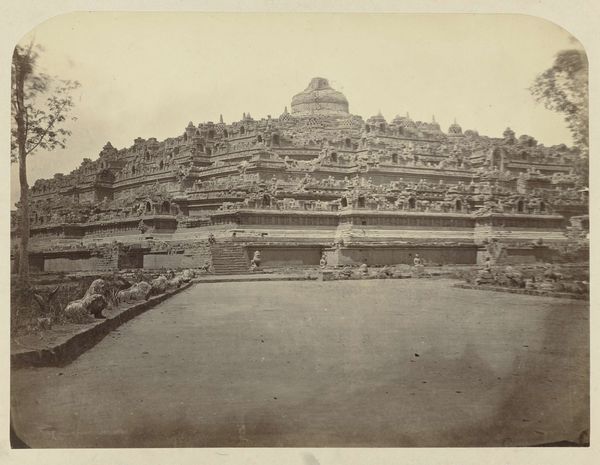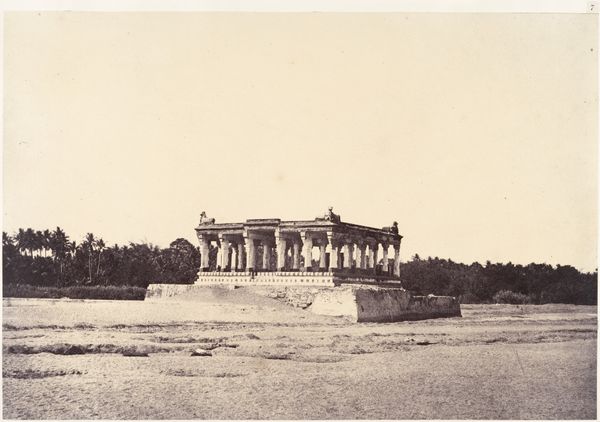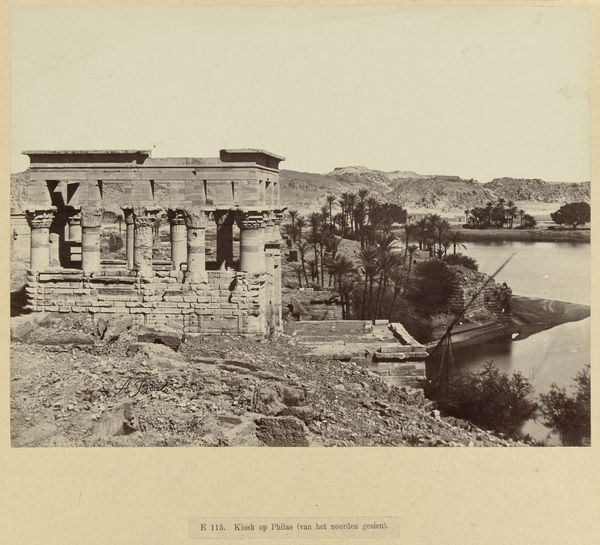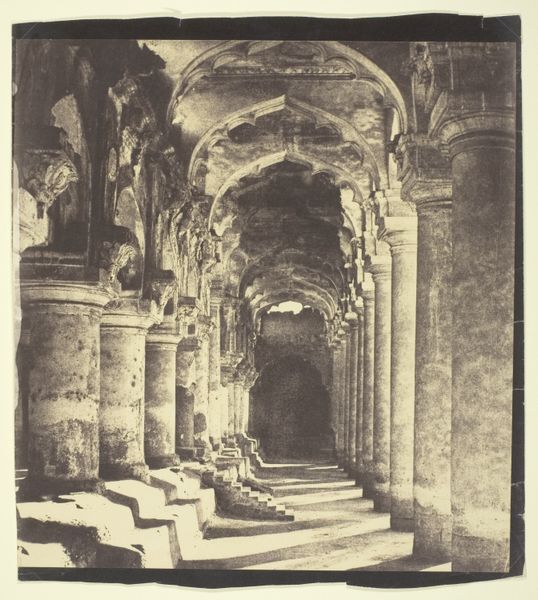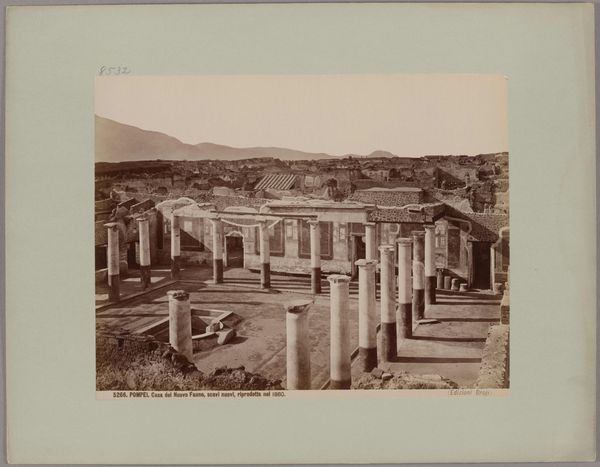
Dimensions: height 210 mm, width 279 mm, height 342 mm, width 445 mm
Copyright: Rijks Museum: Open Domain
Curator: Before us is Louis Huguet’s "La Nymphée in les Jardins de la Fontaine te Nîmes," an albumen print from between 1866 and 1877, currently held at the Rijksmuseum. What are your initial thoughts? Editor: It’s eerily still. The architectural precision is almost oppressive. Despite the soft sepia tones, there's a sense of melancholy, a staged grandeur devoid of life. It speaks of forgotten power. Curator: I appreciate your interpretation. Formally, the photograph uses strong linear perspective, leading the eye to a vanishing point that emphasizes depth. The columns and balustrades exhibit classical symmetry, revealing a clear understanding of architectural form and balance, something particularly noteworthy given it was done using an early photographic technique. Editor: Indeed, but that’s precisely my point! This isn’t just a landscape; it's a carefully constructed ideal of civic power. The Nymphaeum, even in ruin, serves as a physical assertion of dominance and the taming of nature. It is worth mentioning that Nimes was once a significant Roman city. Curator: A fair consideration. The use of the albumen print process results in subtle tonal variations, lending an almost painterly quality to the stone textures. Huguet masterfully captures the contrast between the geometrical precision of the architecture and the organic forms of the surrounding foliage, demonstrating the aesthetic qualities that albumen could convey. Editor: And in doing so, reinforces a certain narrative! We have imposed order juxtaposed with untamed nature, where civilization's ambition leaves us this...monument. But for whom and at what cost? Also, nymphs symbolize femininity and purity which links us to what it means to ‘discover’ water and power during this time. Curator: One can see your point, I suppose, although perhaps we are simply witnessing a documentary account rendered through specific aesthetics, without further political motive? It is interesting to consider though… Editor: Perhaps. The power of an image, however, is its potential for endless reinterpretation and interrogation. Thank you for highlighting these important details about process and craft. Curator: And thank you for opening these considerations around how to unpack images such as these within broader discussions. It really is what brings these historical photographs alive.
Comments
No comments
Be the first to comment and join the conversation on the ultimate creative platform.
